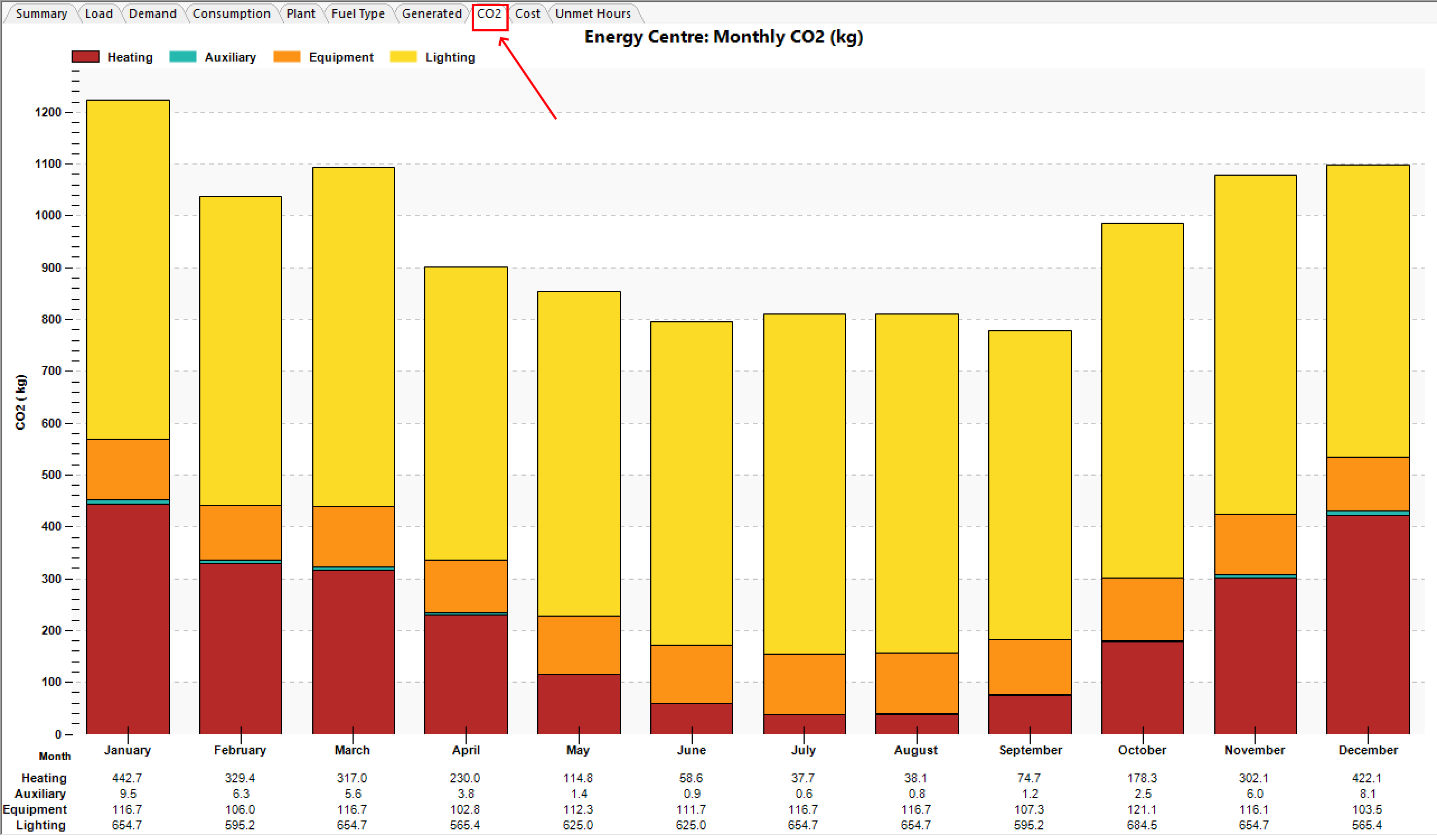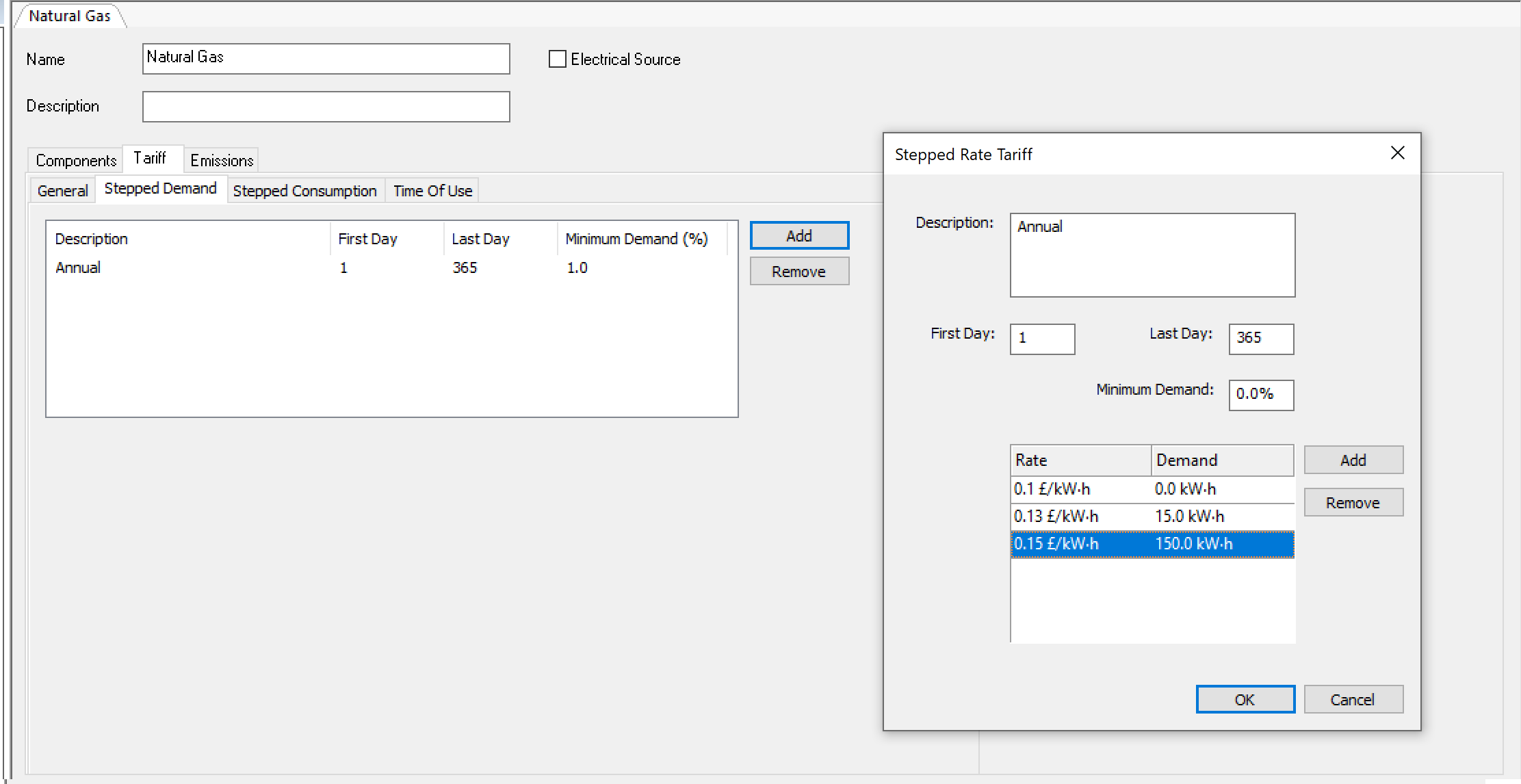Fuel Sources¶
Fuel sources are used to track CO₂ emissions and energy consumption costs of a building during a simulation. Each fuel source has two useful properties:
CO₂ factor (kg/kwh)
Tariff ($/kwh)
Taking the time to specify the tariff can be especially useful when working with calibrated energy models in order to predict the economic saving of implementing HVAC system changes.
Ensuring you use correct CO₂ factors can allow you to create efficient, environmentally friendly designs.
Each fuel source can be electrical or non-electrical:
This is because electrical collections and components such as lighting collections and pumps can only be assigned to electrical fuel sources. You cannot assign, for example, a natural gas fuel source to an electrical lighting collection as the gas would need converting into electricity before it could be used to meet electrical demand.
Emissions¶
The CO₂ factor for a fuel source can be specified on the emissions tab; the unit the value is displayed in is set in the Tas Manager.
The CO2 emissions are reported in the results graphs:
For more information, see the results section.
Tariffs¶
Tariffs are used to track the costs associated with the consumption of fuel sources. The tariff for each fuel source can have features such as:
A monthly charge
A fuel cost adjustment
A percentage discount
You can also tally costs based on demand, consumption or time of use.
The tariff costs in Tas Systems are cumulative – that is, if you specify multiple rates based on demand and time of use, they’ll be added together to form the total cost.
Stepped Demand¶
Stepped demand is used to model the situation where the monthly demand for energy has a direct influence on the cost. For example, if the peak demand for a month is relatively low this may be on a lower tariff than if the peak demand is relatively high for a given month.
Here, the price of the fuel source increases depending on the simultaneous demand.
Multiple stepped demands can be setup for different periods in the year, which is useful if you’re modelling different winter rates to summer rates etc.
Note
The stepped demand costs apply to the hourly peak value that occurs during each month. This rate will then be applied to all hours during that month.
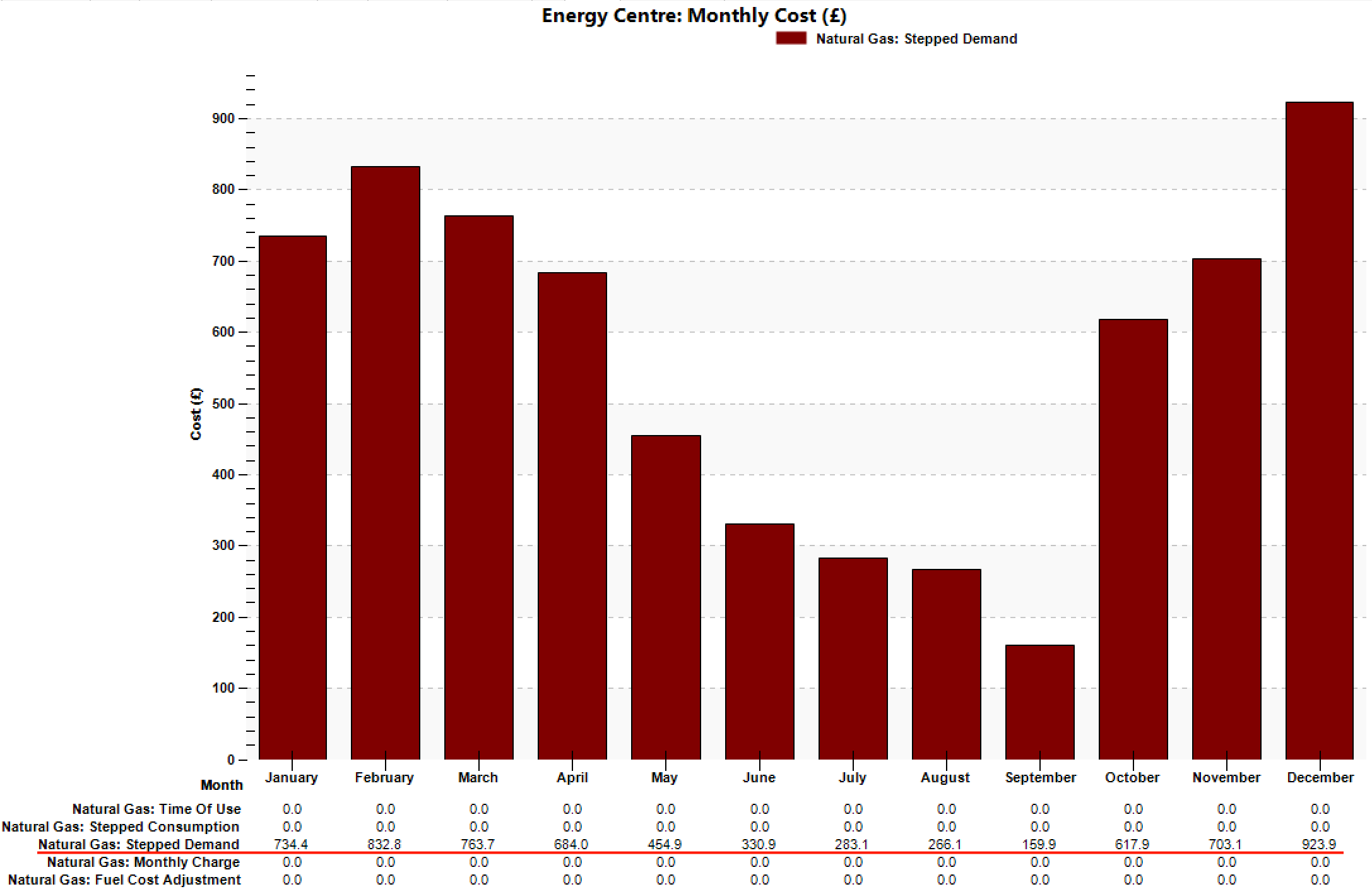
The hourly breakdown of the same data is the hourly average of the monthly cost:
Stepped Consumption¶
Stepped consumption is used to model the situation where the fuel tariff depends on the overall quantity consumed for the year.
The setup is very similar to that of stepped demand:
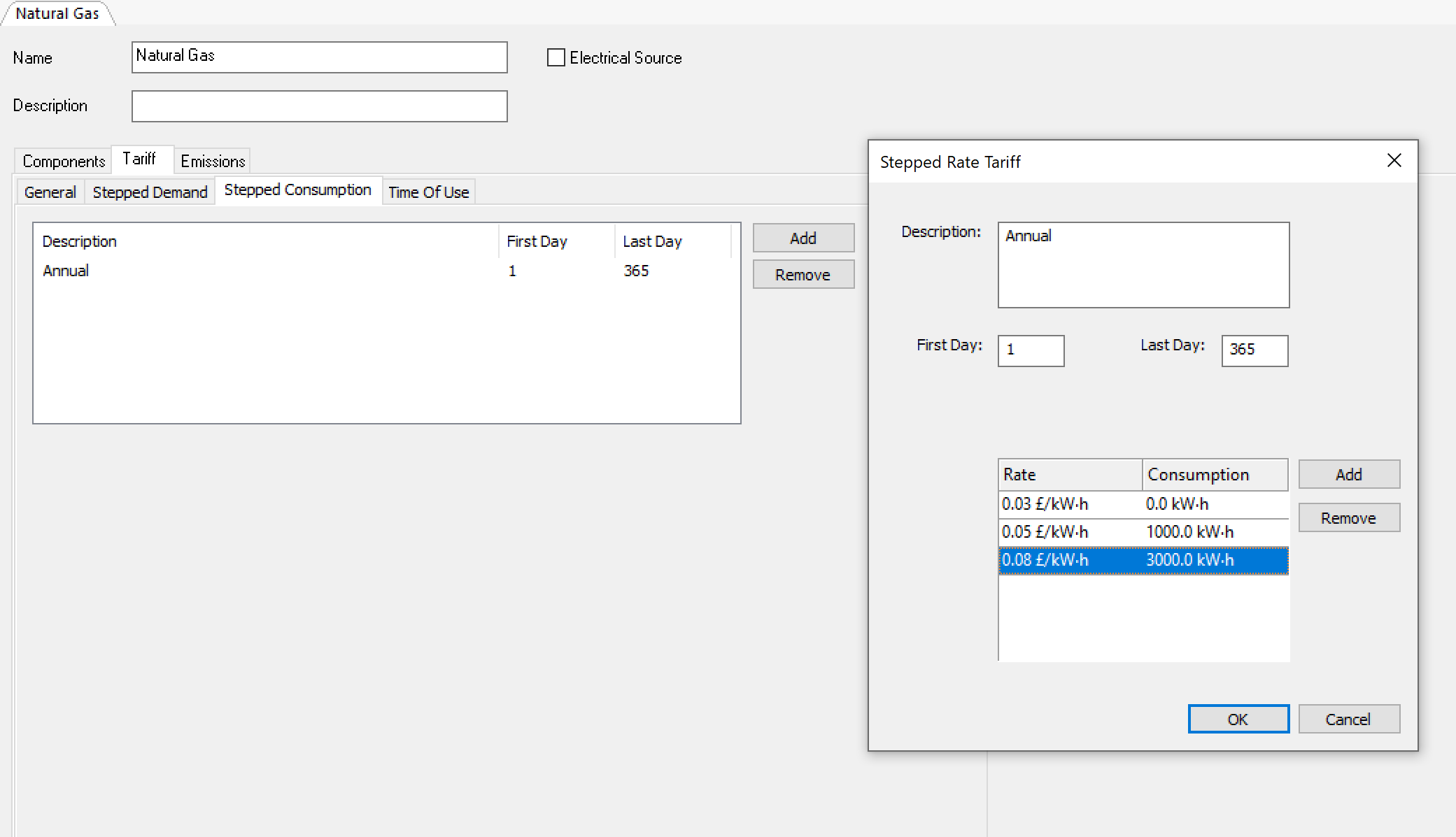
Again, multiple stepped consumptions can be setup for different periods of the year to model different seasonal rates.
When looking at the monthly, weekly, daily and hourly breakdown of the cost due to the stepped demand, the annual cost is averaged across those periods. Concretely, the monthly cost is calculated by dividing the annual cost by the number of days in the month.
Time of use¶
Time of use is the most commonly way of charging for fuel sources and is simply a rate charged per unit of energy consumed.
The time of use tariff can either be:
A single value (Value)
Hourly
Yearly
If the Value option is picked, a single peak charge can be applied to all energy consumed. If a schedule is assigned, an off peak rate can also be specified that applies outside of these hours:
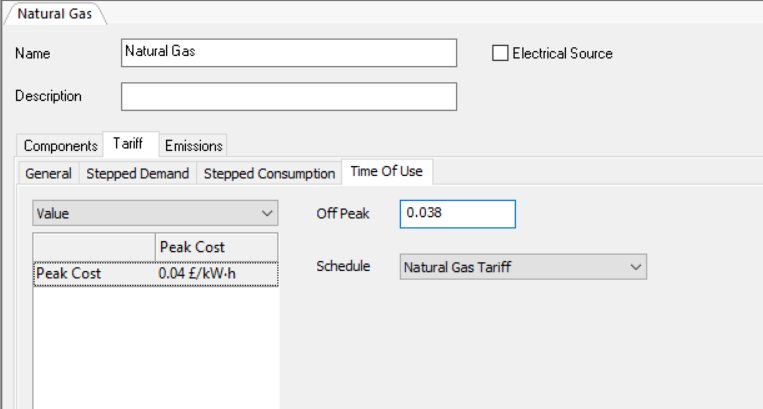
If you need to specify different rates for each hour of the day or for each hour during the year, you can do so with the hourly and yearly options.
